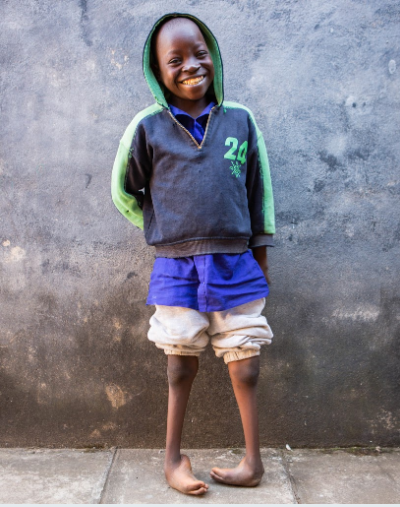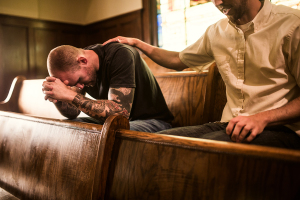How we can kick Clubfoot for good

Today is World Clubfoot Day — a day for celebrating how far we have come, and how far we still have to go, in humanity’s fight against clubfoot. If you aren’t sure what clubfoot is, you aren’t alone. Although about 1 in 1,000 babies are born with the birth defect, people in countries with developed health systems are unfamiliar with the condition because it is so quickly and efficiently diagnosed and treated in infants.
Most cases of clubfoot have no underlying cause, but contracted muscles and connective tissue cause the foot (or feet) to turn in and under. Left untreated, the foot becomes rigid as the child walks on the top of their foot, often developing painful callosities that can become disabling.
Today, millions are disabled, stigmatized, and destitute because of clubfoot. Mothers of children with clubfoot are frequently blamed, causing additional negative impacts. Fortunately, this common tragedy is entirely avoidable.
Many faith-based organizations such as Hope Walks, Hope and Healing International, CURE International, and CBM are actively providing treatment to children with clubfoot in low and middle-income countries (LMICs) where pediatric healthcare is extremely limited. Since CURE International’s founding in 1996, it has healed more than 33,000 children of clubfoot. While this number is impressive, it’s a fraction of the need: An estimated 150,000 to 200,000 babies are born with clubfoot every year. Surgery on this scale is not a realistic option.
The key to overcoming this condition is early treatment. It is easiest and cheapest to treat when the individual is an infant. Specifically, the Ponseti method for correcting clubfoot is inexpensive, globally accepted, and involves braces and casts to stretch the Achilles heel to permanently solve the problem. Intervention later in life often requires surgery, increasing the costs and chance for complications.
The only way the world is going to ever kick clubfoot for good is to invest more in early childhood intervention.
Like a small crack in a building’s foundation, solving the problem early pays off. Intervention at a young age allows the problem to be solved higher “upstream,” eliminating the need to counter social stigmas, perform surgeries, and spend limited resources. In this race against the clock, expectant parents must be prepared to seek medical attention quickly.
Unfortunately, disability is frequently shamed in many cultures and considered a curse caused by the sins of the parents. This common misunderstanding causes parents to hide or mistreat the child.
CURE has been at the forefront of combatting this misunderstanding. We work with local churches in places like Malawi and Ethiopia to spread a compassionate theology of disability to combat the “curse” narrative and encourage adults to bring children with disabilities to hospitals for evaluation and treatment.
Nigist didn’t know what to do when it became clear that her firstborn, Selamu (Amharic for "peace"), had bilateral clubfoot. Now four years old, the child’s legs had grown severely deformed and became a subject of local scorn.
One Sunday morning, her local church hosted a guest speaker: Pastor Mesfin, the Spiritual Director at CURE Ethiopia. Pastor Mesfin shared a compassionate theology of disability, dispelled superstitions, and told parents about the healing available at CURE Ethiopia. Nigist immediately brought Selamu in for evaluation and treatment.
Because of his age, three surgeries were necessary to repair the damage and improve his life forever.
Although Selamu’s story ended well, it was entirely avoidable. If treatment options were available, socially-accepted, and administered soon after he was born, he would have never needed surgery and his family would never have been ostracized.
While Selamu can walk normally today, he should have been able to do so for years. That is our goal. It’s why we partner with others, including Oxford University, to train others on how to address this problem in infancy. On this World Clubfoot Day, let us recognize that we have the tools — through early intervention — to prevent clubfoot from plaguing God’s children in the future.
Justin Narducci serves as President & CEO of CURE International, a Christian nonprofit organization that operates the world’s largest network of surgical hospitals for children around the world. Based in Grand Rapids, MI, the nonprofit has integrated spiritual and medical care to treat children and minister to families living in poverty for 25 years.



























